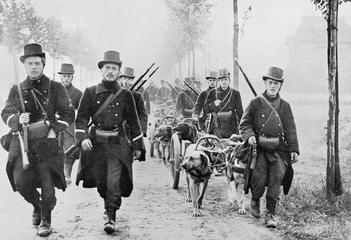German atrocities almost from the first hour
Special to The Great War Project
(6 August) Belgian snipers effectively target German soldiers from the first day the Germans enter Belgian territory.
The Belgians do not intend to give the Germans free passage into northern France. Troops from Belgium’s small army – including those on horseback and even on bicycles — prove very effective against the first German probes into Belgium.
The Germans respond viciously. “Almost from the first hours,” writes war historian John Keegan, “innocent civilians were shot and villages burnt, outrages all hotly denied by the Germans as soon as the news – subsequently well attested – reached neutral newspapers. Priests were shot too.”
This story, “The Rape of Belgium,” would prove to be highly contentious throughout the century after these events take place. Although some historians challenge details of the German army’s behavior in Belgium in these first days of the war, historians such as Keegan conclude these atrocities did occur, served no military purpose whatsoever, “and did Germany untold harm, particularly in the United States.”
“Our advance in Belgium is certainly brutal,” General Helmuth von Moltke, the chief of the German general staff, writes at the time, “but we are fighting for our lives and all who get in the way must take the consequences.”
Massacres and atrocities continue unabated, including the slaughter of hundreds of women and children.
“The killing was systematic,” writes Keegan. At one small Belgian town – Tamines – 384 were killed according to Keegan. “The hostages were massed in the square, shot down by execution squads and survivors bayoneted.”

